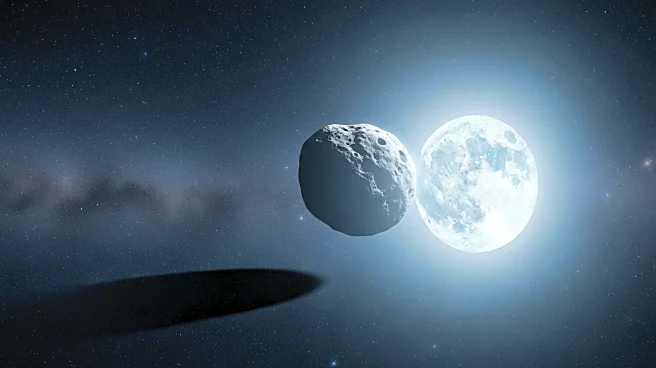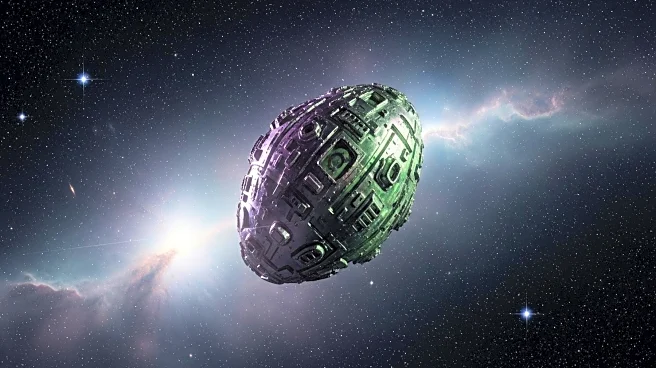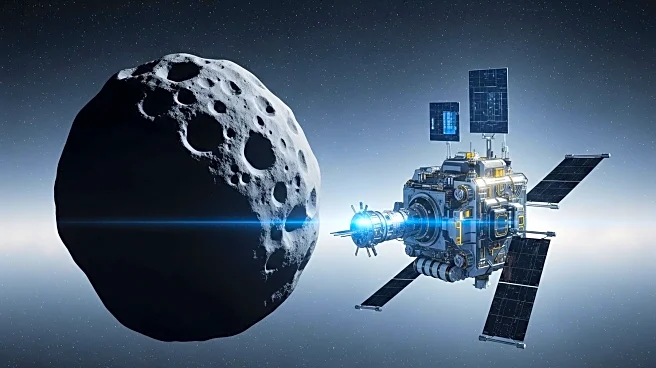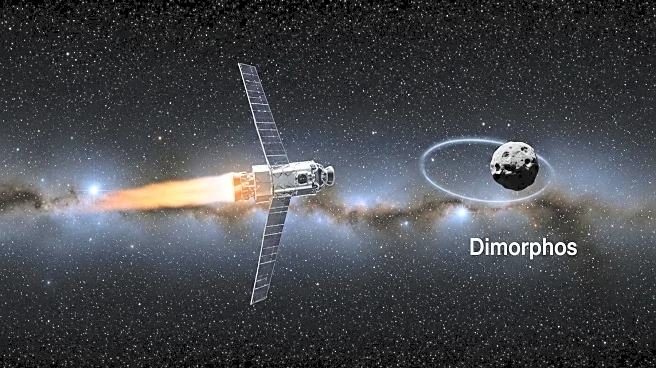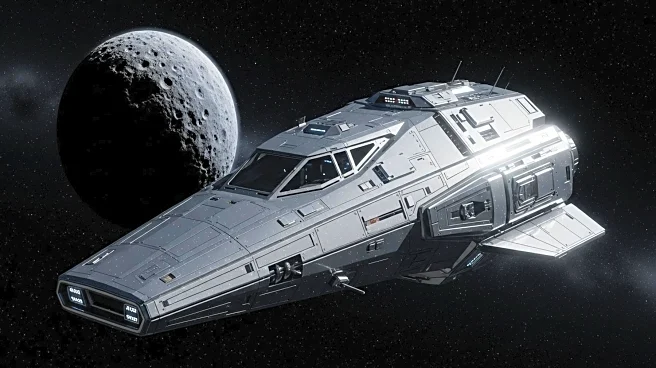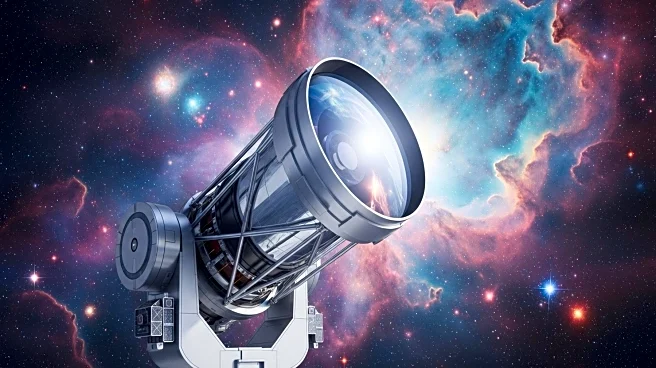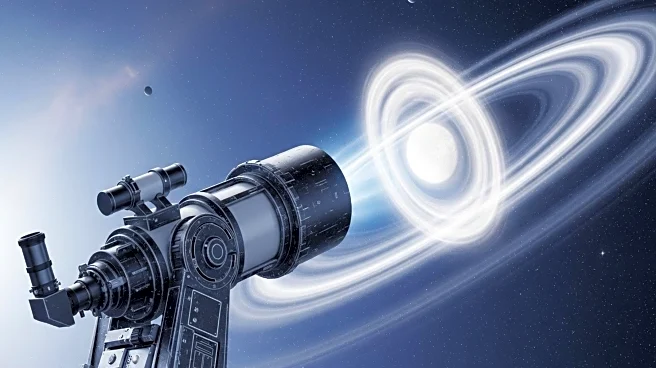What's Happening?
NASA's Double Asteroid Redirection Test (DART) mission, which aimed to change the orbit of the asteroid Dimorphos, has produced unexpected results. After the spacecraft impact, Dimorphos's orbit around the larger asteroid Didymos continued to alter over the following month, a phenomenon that astronomers cannot fully explain. Initial observations showed a reduction in the orbital period by about 30 minutes, but it further decreased by another 30 seconds. Researchers suggest that the impact may have caused Dimorphos to spin, leading to friction and heat generation, which could account for the continued orbital changes.
Why It's Important?
The unexpected outcome of the DART mission highlights the complexities of asteroid deflection and the challenges in predicting orbital changes. Understanding these dynamics is crucial for developing effective strategies to protect Earth from potential asteroid impacts. The findings underscore the need for continued research and exploration to refine our knowledge of asteroid behavior and improve deflection techniques. As space agencies prepare for future missions, the insights gained from DART will inform the design and execution of planetary defense initiatives, ensuring better preparedness for potential threats.
What's Next?
The results of the DART mission will likely prompt further investigations into the mechanics of asteroid impacts and their effects on orbital dynamics. Researchers may explore additional models and simulations to better understand the factors influencing orbital changes. The mission's findings will contribute to the development of more accurate predictive tools and strategies for asteroid deflection. As space exploration continues to advance, collaboration between international space agencies and scientific communities will be essential to enhance our capabilities in planetary defense and ensure the safety of our planet.


